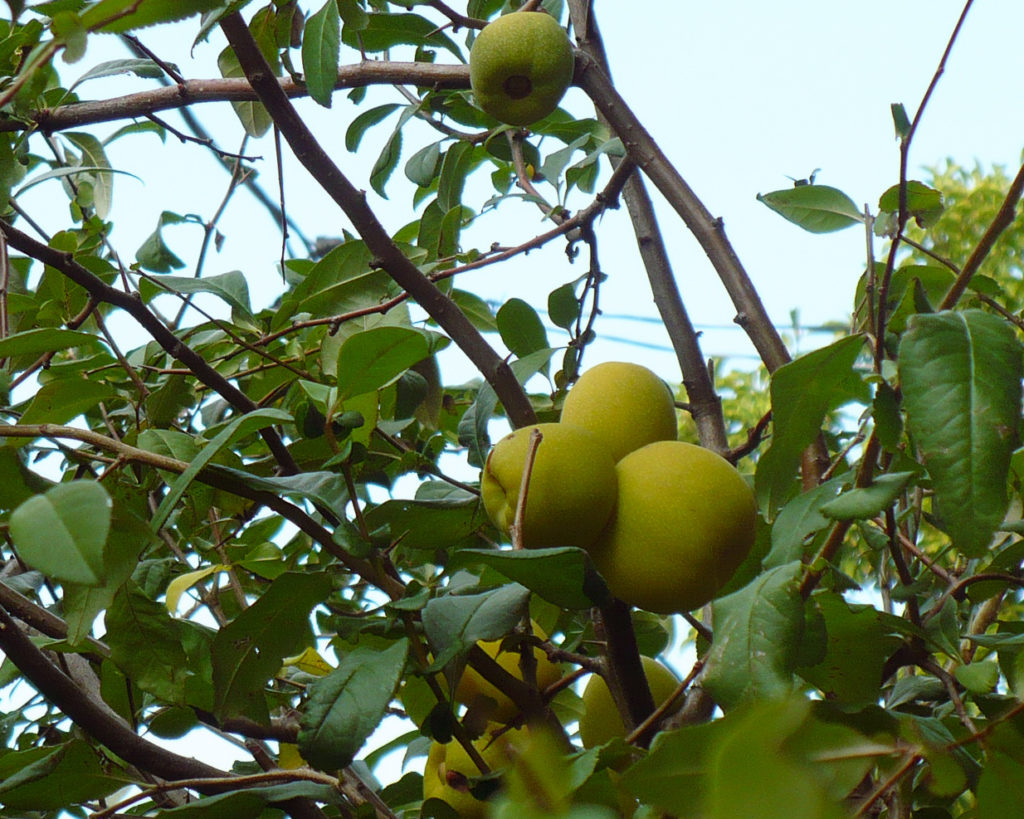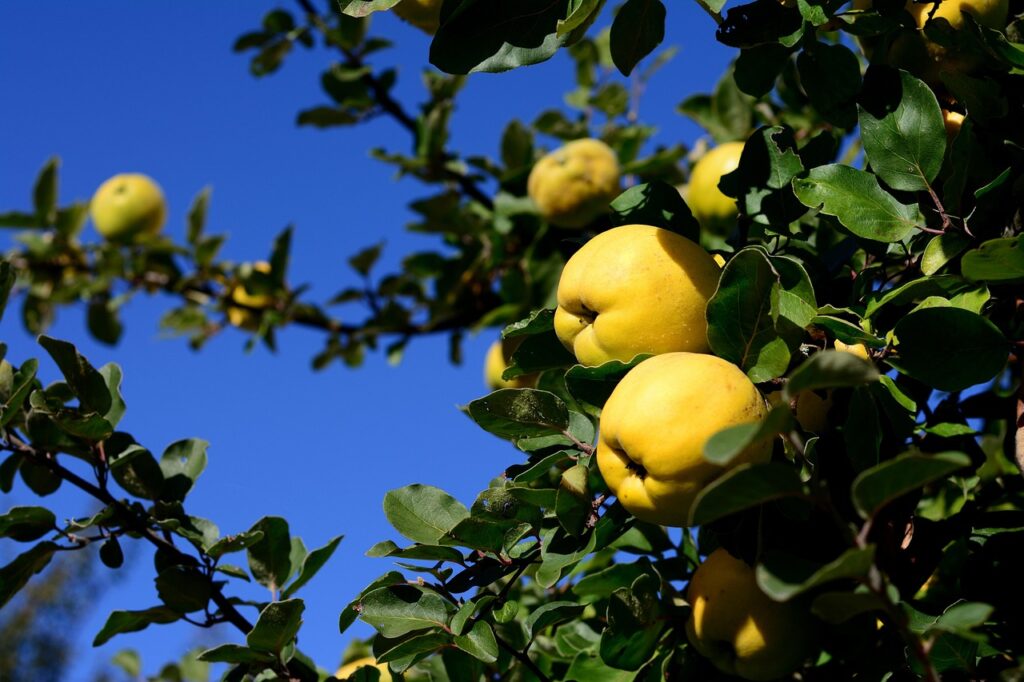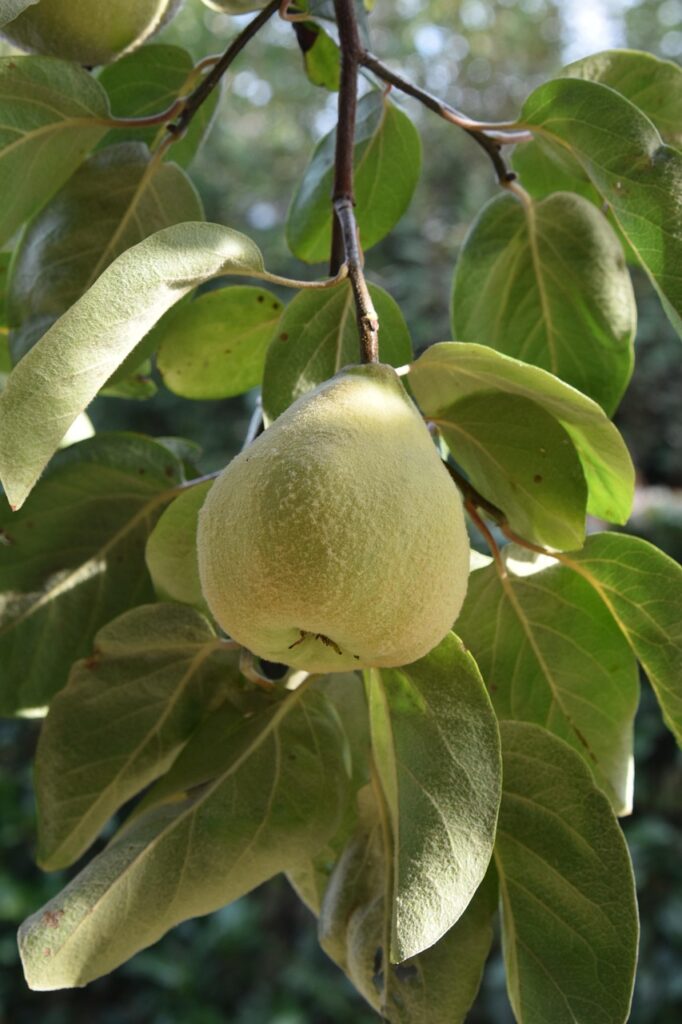Quince
Summary
Quince (Cydonia) is a pome fruit. Quince resemble knobbly, yellow apples, and they’re known for their lovely floral scent. They’re a rare fruit in Toronto, so they’re quite a treat! Unripe, they’re green, with a white coating. As they ripen, they’ll turn yellow and lose their coating. They might also develop an orange ‘blush’ on their skin.
Jump To
Average Ripening Timeline: early September to end of October


Ripeness Indicators
- Color When Ripe: turns from green to golden yellow, sometimes developing orange spots
- Feel & Texture When Ripe: very hard to the touch, no fuzzy coating on the skin
- Taste & Smell When Ripe: very strong, sweet fragrance
- Underripe if…small in size; green skin; fuzzy coating on the skin
- Overripe if…flesh gives when pressed on; fruit is falling off the tree

How to Harvest
Average Yield: 30 to 150 lbs
- Should come easily off the tree
- Pick by hand: lift the fruit and twist
- If you need to harvest early due to frost, cut the stems with clippers

How to Store and Eat
Storing
If picked before fully ripe, can ripen in a paper bag at room temperature.
Quince bruise surprisingly easily, so handle gently and do not stack them. Store in a cool, dark place, away from other fruits or wrapped in paper towel to keep the aroma from infiltrating other foods.
Ideas for Eating
Most varieties of quince are too hard and tart to eat raw.
Peeling and chopping raw quince can be difficult, so be careful.!
Cooking turns them into a beautiful pink colour, and develops the flavour into a sweeter, more apple-like taste.
In Spain, a jelly-like paste called membrillo is made of quince and traditionally eaten with Manchego cheese. It’s also used in Middle Eastern and North African savoury dishes.
Quince makes great jelly, sauce, and pie.